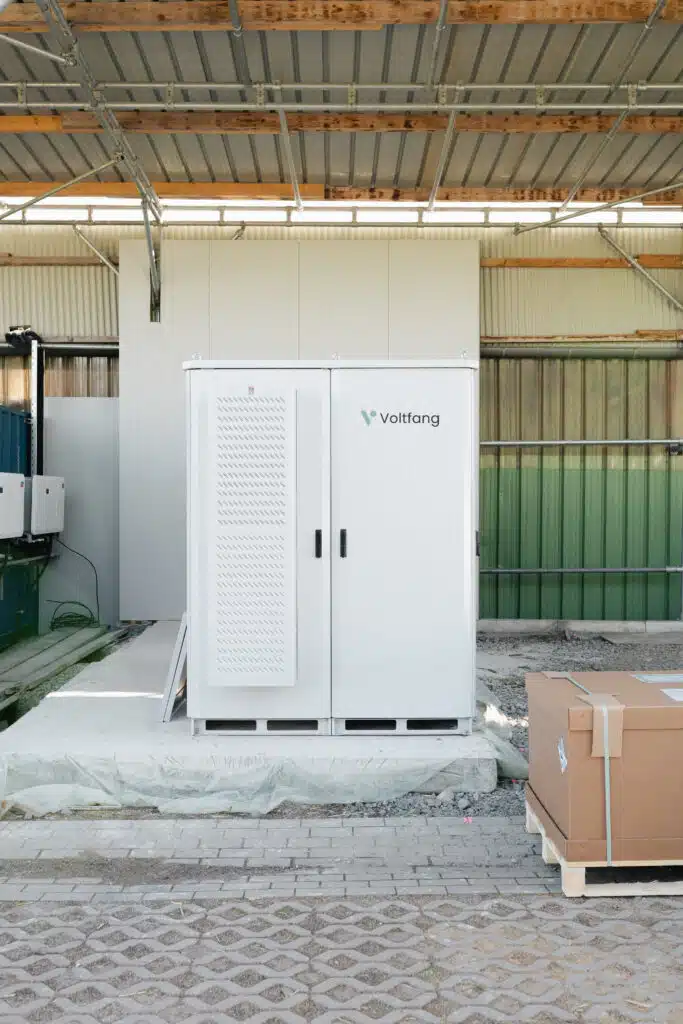How to keep your PV system efficient in winter: tips and solutions
Author: Julie Vandegaar
Reading time: 3 min
Table of contents
Winter differences in PV system output
The seasonal fluctuations in the electricity production of PV systems are particularly relevant for companies that rely on a continuous energy supply. While 70 to 80 percent of the annual yield is generated in the summer half-year, April to September, only 20 to 30 percent is generated in the winter half-year, October to March (source: EnBW). However, this does not mean that a PV system is no longer worthwhile in winter – on the contrary. With the right technology, you can make your energy supply efficient even in the darker months of the year.
Good to know!
You can also be supplied with green electricity in winter. Wind turbines, for example, continue to generate energy during the darker months of the year, which the intelligent battery storage system then draws from the grid. The more sustainable the battery storage system is manufactured, the greener it becomes.
Efficient energy use in winter: Battery storage as a strategic solution
For commercial and industrial customers, the effects of winter are doubly noticeable: while PV systems supply less energy, energy requirements often increase – whether for lighting production halls, operating heating systems or ensuring uninterrupted processes.
A modern battery storage system offers decisive advantages here. It is true that it cannot store electricity seasonally, such as keeping energy from the summer ready for the winter. However, in addition to storing electricity from the company’s own PV system, it can also be charged from the grid. A battery storage system should be combined with an intelligent energy management system (EMS) in this case. This is because it charges itself with grid electricity when it is particularly cheap.
Winter hardiness: Robust storage solutions for commercial use
Industrial and commercial operations place high demands on the reliability of battery storage systems. The Voltfang 2 was specially developed for outdoor use. Its robust design, double-walled structure and intelligent climate control make it ideal for outdoor use. Temperatures from -20 to 50 °C as well as snow or rain do not affect performance or capacity. Even in freezing temperatures, the battery cells remain at an optimum temperature so that companies can always count on a reliable power supply.
Dynamic electricity prices: How companies optimize their energy supply in winter
The secret to efficient use of battery storage in winter lies in the intelligent use of dynamic electricity price models.
What are dynamic electricity prices?
Dynamic electricity prices offer companies the opportunity to flexibly manage their energy costs. In contrast to fixed tariffs, these prices are based on the market prices of the electricity exchange, such as EPEX Spot. This means that electricity can be purchased precisely when it is cheap – for example when there is an oversupply of renewable energy or at night. This results in considerable savings potential, especially for companies with high energy requirements.
Intelligent energy management for maximum efficiency
An intelligent energy management system (EMS) is the key to benefiting from dynamic electricity prices. The EMS monitors the electricity market in real time and ensures that a company’s battery storage system is only charged when prices are low. When electricity prices are high, the system draws on the stored electricity , minimizing energy costs. In this way, commercial and industrial customers can not only save costs, but also achieve their sustainability goals.
Conclusion: Sustainable energy supply despite winter conditions
For companies that depend on a reliable energy supply, the combination of PV systems, battery storage and dynamic electricity prices also offers considerable advantages in winter. While the energy production of PV systems decreases in the dark months, modern battery storage systems can store surplus electricity from renewable sources and make it available when needed. This not only reduces dependence on fossil fuels, but also lowers operating costs and relieves pressure on the electricity grids at the same time.
The future of corporate energy is green, efficient and, above all, storable.
Do you want to ensure an efficient energy supply even in winter?
Let’s optimize your strategy together!
Arrange a non-binding consultation appointment today
